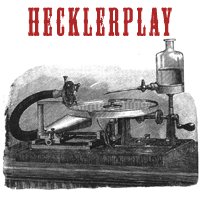 In the late eighties, the UK was home to the most exciting music culture movement since punk as a mutation of house music, born in Chicago but exported to the warehouses and fields of Britain, re-wrote the relationship between artist and audience.
In the late eighties, the UK was home to the most exciting music culture movement since punk as a mutation of house music, born in Chicago but exported to the warehouses and fields of Britain, re-wrote the relationship between artist and audience.
With Acid House, the crowd and the DJs were a partnership, both there to make equal contribution to the euphoria of the rave. As BPMs got faster in the nineties acid house begat rave which in turn begat jungle.
With the help of pirate radio, jungle (which was starting to be known by the less exciting but seemingly more popular name of 'drum and bass') became a dominant underground force. The importance of the crowd wasn't the only way in which dance music challenged a comfortable and complacent music industry. The music may have been disparagingly called 'faceless' but rock's cult of personality was a tired hangover from its heyday and certainly nothing to aspire to for a generation who had found a genuine alternative.
Eventually though, musicians start to resent being cogs in a scene and start viewing themselves as artists. So in the spirit of experimentation, some of the pioneers started a journey that began with a desire to create music that could be played outside the clubs and ended up with a concept album about Goldie's mum.
It was responsible for a few notable tunes and a lot of tedious and worthy toss. Like so many musical crime scenes, the saxophone was the murder weapon. The name of this genre was the appropriately self-regarding 'Intelligent Drum and Bass'.
Which brings us rather neatly to present day. Regardless of your feelings about dubstep, it's an unarguably important movement in a dance music scene which was long overdue one. A few years in and its protagonists are experimenting and taking it in new directions. For the time being, these experiments are coming under the umbrella of post dubstep.
It's heartening that, for the first time in a while, dance is spawning sub-genres quicker than it can name them. However, when we look back in a few years, it will be the more commercially dominant acts that will exemplify the term. Although Mount Kimbie (who apparently coined it) and Jamie XX are lumped in now, we'll probably have new names for what they are trying to do. No, it will be artists like James Blake and SBTRKT that won't shake the label and will be considered definitive.
So here we are again- a polite, boring and worthy new sound spawned from an exciting genre. This time saxophones are mercifully absent although the 'soulful' male vocals are a cause for concern. The James Blake album is so unexceptional and tasteful that it sounds closer to Sade. SBTKRT has taken the Blue Lines route. Since Massive Attack's 1991 debut, it's tradition for dance acts to show their 'variety' and wheel out the guest vocalists. The result is well-produced but unexciting; gathering plaudits from a music writer community terrified of expressing an unfashionable opinion. It's this that will be post-dubstep's legacy.
The late great John Peel once announced that he liked the idea of intelligent drum and bass because it implied the existence of stupid drum and bass, the idea of which he found much more appealing.
In which case he may have appreciated 'brostep', the US take on dubstep.
The Americans may only be capable of getting dubstep by throwing rockstar poses and testosterone fuelled bass drops, but at least by completely missing the point, they've stumbled across something energetic.
No hay comentarios:
Publicar un comentario